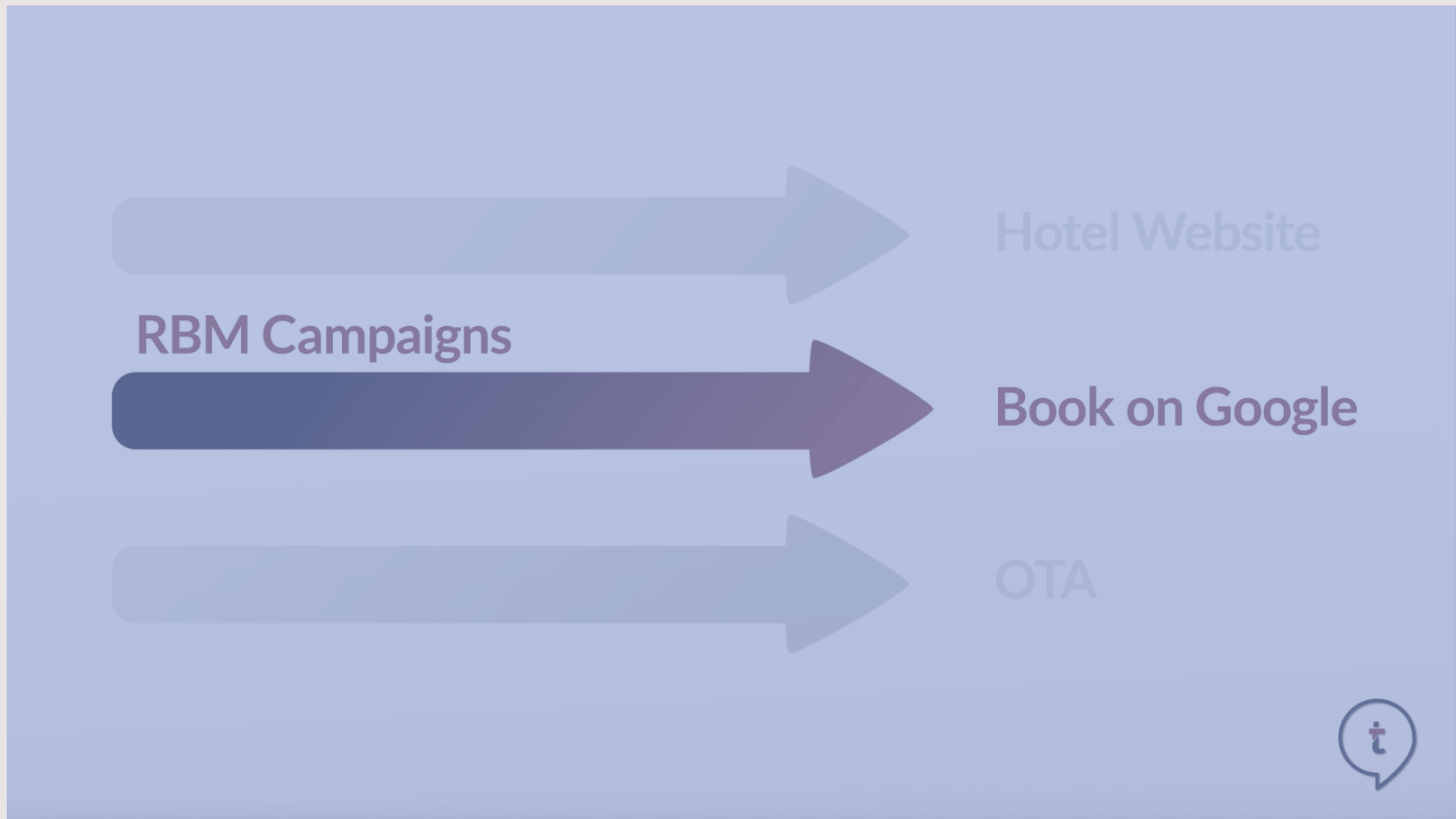Content Management in the Hospitality Industry
The world has evolved to consumer led content focus with the consumer deciding what they like and value.
Consumers want to see what they care about, not what you want to show them.
In the hospitality industry, this often-insatiable desire fuels demand for increasingly granular content in an ever-increasing myriad of booking sites.
Consumer demand coupled with collecting, creating, curating, and then distributing content is daunting. And without factoring in global partners’ differing, prescriptive content and image requirements. Conjures a vision of frenzied data exchanges hurtling through the connected world.
Why is it so complex?
Legacy Content Formats
This complexity is partly due to an industry comprised of legacy systems initially built years ago. One example: Global Distribution Systems (GDS), initiated by major airlines decades ago, were built for their internal reservation employees and travel agents. They could leverage their travel knowledge to learn and understand GDS-centric data inquiry and response information. Content written for a different audience who understood travel terminology or could be trained to use abbreviated formats, codes, and systems (travel agents, internal agents). In this era, there were character restrictions and limitations.
Moreover, the hotel Central Reservation Systems (CRS), Content Management Systems (CMS), and Property Management Systems (PMS) may have disparate content originating sources (corporate, regional, on-property authors) and over time, not all the content fields desired or required for third-party online distributors. However, even with innovative system improvements through the years, vestiges of legacy database complexities and connectivity idiosyncrasies persist that the hospitality industry must contend with.
Content Quality and Relevancy
Content is an important part of a marketing strategy. It tells the story of all types of lodging to potential guests, so why is it so complex? The first issue is the amount of curated content required on all booking channels. Each channel has its own requirements from images to videos, copy in the form of single attributes or values, descriptions constrained by characters and length, checkboxes, and free form fill in the blank fields.
Whether at the corporate level, hotel, or lodging location, securing all required content can be challenging. Keeping content current requires a lot of workforces. From working with the hotels to secure current information to manually updating content in extranets or via email with spreadsheets for partners, the amount of time it takes to update and audit content is overwhelming. And if you cannot comply, a low page display ranking or no display could be the price you pay.
Static vs. Dynamic Content
Content that describes factual and photographic information about a hotel is often referred to as “static.’ A fallacy and mistaken belief that does not reflect the frequency of change in lodging content. While rates, inventory, and promotions are considered “dynamic.” The reality is that describing content as static is a misnomer and belies its importance. Today’s consumers are looking for more detailed and time-sensitive information now more than ever.
The amount of “essential” and time-sensitive content required can be overwhelming for hotels and lodging providers to keep up with in addition to the ever-changing additive content requests and/or new requirements from distribution and online partners. The pandemic amplified the importance of on-property real-time status on healthy safety conditions. At the same time, it magnified new levels of sanitation and cleaning protocols in detail never required by guests before. Content teams are in constant motion from contactless check-in to restaurant and other guest service operating hours – creating, auditing, and updating content. Ironically, with the pandemic driving business downsizing, content teams were impacted, potentially reducing the frequency and volume of content updates.
Content Syndication
Content can be your best salesperson. Consumers check a dozen or so online booking websites before booking, potentially causing confusion when they see content that is not the same on each website. Syndicating the content across multiple global online marketplaces and channels can have unintended consequences. In extreme cases, critical Information is not transmitted across channels. The most basic Information – the actual name of the room is not always transmitted or shown on the intended website.
Part of the challenge is the underlying systems that syndicate content to online booking websites. Systems that were initially designed and content written for a different audience – not consumer direct. Moreover, frequently there are differing field length limitations and restrictions on certain characters and symbols. As the value of marketing and commerce sites and their impact on all channels continues its growth, the value of improved content becomes very meaningful. Lack of content tools that can exploit cross-channel capabilities support scalability to ever-increasing online booking websites can result in inefficient, complex, and error-prone content updates.
Content Parity
Why is it important to have content parity? Content parity across channels is just as important as rate parity but is a distant second priority. Online booking websites are often far better at adding the latest content that consumers want, which can give them an advantage over hotel and lodging providers' direct channels. Consumers searching for the best offer will compare the same lodging across multiple channels looking for the best deal. Hotel websites typically try to tell a story about the on-property experience. In contrast, third-party online booking websites are more snippets of facts that can easily be compared across hotel and lodging offerings. This harkens back to the premise that consumers want to see what they care about, not what you want to show them.
Content Strategy
A content strategy defines how you will use content to meet business objectives and satisfy consumer needs. Content touches every area of an organization requiring alignment to execute to make it reusable and fulfill customer needs. Too many goals lead to one-off content contributing to the content chaos. Without a content strategy, content can become channel-centric instead of customer-centric.
It is key to treat content as an asset to be invested in and operationalized, not a cost of doing business. Designate someone to lead the charge of collaborating and coordinating consumer-facing content. Establishing a more holistic view of content production, redundancies, and inconsistencies will expose opportunities to address them.
Content Curation
Curation guides decisions about content throughout its lifecycle, from concept to delivery. You cannot only assess how content is managed and delivered. You must transform the content itself. Text strings into bite-size chunks that can be formed into useful components, efficiently compiled, and displayed for online shoppers. This approach also reduces translation complexity and expense. Enforce practices that ensure that content is sustainable to keep it updated and relevant. Sustainable content is content you can create and maintain without impacting quality.
Often hospitality content sources and operations reside in disparate corners of creative services, sourcing, marketing, merchandising, and customer service. Form a content landscape to understand the periodicity and requirements in streamlining and improving current content operations.
Curb Content Chaos
In any industry, things change constantly. Legacy systems will eventually sunset. Standards will evolve. Technology will improve. That means your content needs to change continually to stay relevant. Again, designate someone in charge of content across the consumer-facing enterprise and define the role, strategy, and oversight responsibilities. This is where your content strategy comes in: content strategy defines how you will use content to meet business objectives and satisfy consumer needs.
For now, here are system and process considerations to curb content chaos:
- Invest in technology or providers for image, content, and translation management systems where possible
- Investigate tools that support cross-channel delivery capabilities and content syndication
- A solution that can support a long-term, all-channel approach to aggregating, building, and leveraging your content while optimizing for efficiency
- Create content with the goal of making it reusable, rather than by someone who imagines it for a particular channel, product, or location
- Audit your content as often as possible, or at the very least check your content scores on those sites that provide it
- Involve your reservation team or call center as that is where the guest will call if they cannot find what they need on your website – use this information to address deficiencies
- Improve knowledge sharing and process efficiency for team members through improved access to information
About the Authors
Anne Cole, Consultant & Hospitality Content Distribution Strategist

Anne Cole is an accomplished content strategist and travel distribution executive with more than 25 years of experience in the hospitality industry.
A self-described "Contenteur" she is at the forefront of the juncture where content, channels, and consumers intersect, delivering compelling customer experiences which drive new revenue opportunities. She has a proven track record of orchestrating and executing targeted business initiatives that leverage new technology, optimized operations, calibrated multi-channel content delivery, and compelling customer experiences.
Areas of Expertise include:
- Enterprise Content Strategy, Management, Translation, Localization and Search Optimization
- Oversight of Multi-Channel Operations, Channel Merchandising and Electronic Distribution Services
- Strategic Account Management, Innovative Solution Delivery and Complex Project Deployment
- Online Travel Intermediaries, Global Distribution Systems and Online Direct Strategies
- Contributing to Corporate Profits, Goal Development and Matrix Organization Execution
Board Positions: Former Open Travel Alliance and HEDNA Executive Board of Directors member
Connect with Anne on Linkedin.
Sarah Fults, Vice President, Distribution at MGM Resorts International

Sarah Fults brings 26 years of hospitality experience to her role as Vice President of Distribution at MGM Resorts International. Sarah is responsible for discovering and implementing new technologies to optimize channel performance while driving operational efficiencies and reducing costs in her role at MGM. She joined MGM in 2016 from Choice Hotels & Loews Hotels & Resorts, where she oversaw all aspects of Third Party Distribution.
A career hotelier, Sarah started working the front desk and then as a Reservations Manager at The Sanctuary on Camelback in Scottsdale, Arizona. She discovered the technical side of the hospitality industry as the beta partner for a new PMS and joined Pegasus Solutions in 1997, working in the property systems group. As the hotel industry embraced the Internet, Sarah was at the forefront as an Account Manager with digital agencies Interactive Sites and Blue Square Studios. In 2005 she joined HBSI to develop the first channel management solution, automating connectivity for online travel agencies and wholesalers. Sarah holds a Bachelor of Science degree in Global Business, specializing in Marketing from Arizona State University. She enjoys traveling internationally, interior design, and architecture.
Connect with Sarah on Linkedin.
Also, make sure to find these supporting content elements about Content Management in Hotel Industry
- VIDEO l Content Management in the Hotel Industry, co-created with Gianna Rivera (Wyndham Hotels & Resorts and HEDNA) & Sarah Fults (MGM Resorts)
- PODCAST l Content Management - What are the challenges and opportunities? with Gianna Rivera, Sarah Fults and Natalie Kimball
- INFOGRAPHIC l The Central Content Management Hub - How could it look like?
EXPLORE FURTHER. Related editorials




 Free download
Free download

![V03: The History of Hotel & Travel Technology | [Updated] Infographic](https://www.techtalk.travel/storage/app/uploads/public/63f/e6f/ec8/63fe6fec80447817849943.jpg)



Create an account to access the content.
Get access to Articles, Video's, Podcasts, Think Tanks, Infographics and more.
Click “Sign In” to accept our
Terms of Service Privacy Policy